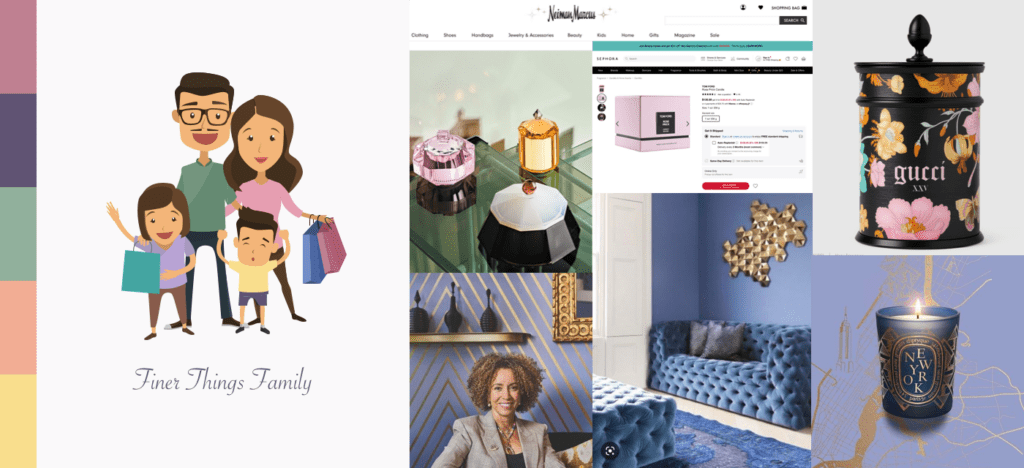Behind the scenes of agency ownership, there is a hidden world of client relationships and the pursuit of lasting connections. As an agency owner, I have always believed in nurturing these bonds long after the project ends. It’s not just about seeking the next sale or referral; it’s about genuinely caring about the impact our company has made and whether it has truly fulfilled our clients’ aspirations.
But occasionally, we go beyond the typical client relationship and transform our agency into an incubator. Once a year, I embark on a unique journey, taking on a client who can’t afford our regular rates. These special partnerships are reserved for businesses with a profound mission, usually focused on making a positive impact. In exchange for heavily discounted or even free services, I’ve seen it all – from informal pay-you-later plans to offers of equity in their ventures. These endeavors may not always yield a traditional return on investment, but they carry a profound altruistic belief that taking a leap of faith will reward us both in some extraordinary way. And for the most part, they do.
This is the tale of a client that shattered my faith and tested my trust in humanity. Let’s call the antagonist of this story ‘Four Fragrances’ – a name that both protects their anonymity and captures the essence of their story. I had the privilege of working with Four Fragrances intermittently since 2009. At one point, their founder, whom I’ll refer to as ‘Annie,’ stood as a personal idol – a remarkable business owner I admired and aspired to become. Annie’s company created a line of beauty products that embodied wholesomeness, with all-natural ingredients sourced from Moroccan villages, driven by a women-helping-women ethos. Their values resonated with me on a profound level, and by 2013, the sacrifices I had made – the countless hours of work done at a fraction of our regular fees or even for free – were rewarded with gestures of immense kindness, a promise of commission, and a great case study.
Since then, my interactions with Four Fragrances had been minimal, except for occasional touch points and paid projects. Fast forward to 2022, and the narrative takes an unexpected twist, plunging into the depths of drama.
I was burnt out and tired of dealing with clients who had fragile egos, disingenuous altruism, or questionable morals. My company had been actively looking for an acquisition for a few months, and I felt the need for a change. Drawing from my past experience with Annie and her company, I felt confident that I could take Four Fragrances to market with wild success, especially with some disposable time on my hands and more expertise under my belt. Partnering with one of my personal heroes and the values of their brand made a lot of sense to me. It felt like a spiritual awakening, almost as if it was meant to mark the end of an era and the beginning of a new chapter. As I closed in on a buyer for our company, I saw an opportunity to start exploring a career change and potentially build Four Fragrances into the next great brand for my future.
Little did I know how wrong I was.
Choose your own adventure with this one. You can read an sanitized version of what I sent to Annie as a Viability Analysis and Marketing Plan suited for where she was in the journey. Much of which I add anecdotes and color to through the rest of this story.
Building Four Fragrances from Scratch
We re-opened a decade-old project, and I was more excited about it than any project in recent years. However, as we delved deeper, cracks began to appear. The first red flag emerged when I realized there wasn’t a pricing strategy or financial forecast in place. Annie seemed oblivious to the costs involved, and I had to create cost projection spreadsheets and help the company determine potential margins. It was disheartening to realize that, as an outsider, I was the one who had to explain these basic principles.

It started with discovery as most projects do: Blue Sky, North Star, SWOT, and other exercises to assess what the brand IS and what it COULD BE. There were a lot of poor assumptions by Annie and for the first time in the decade-long journey with Four Fragrances, I pierced the veil and illusion of who I thought she was and why the brand struggled to succeed. I knew I would have to be more involved than anticipated. I wasn’t building just a website or brand, I was consulting the basics of building an e-commerce business.
Despite this setback, I remained determined to make Four Fragrances a multi-million dollar brand. I knew what I was bringing to the table with e-commerce, tech, buyer psychology, and much more. I saw a market and an opportunity, especially after conducting extensive research and due diligence. Over the next four months, I dedicated myself to spending significant time in Los Angeles, immersing myself in the local community and learning from successful boutique brands. Surprisingly, many of these established brands had little to no online presence and relied solely on foot traffic. Even the larger brands lacked effective SEO strategies and organic growth.
During this period, I couldn’t help but draw a parallel to Ryan Cohen’s experience with Chewy. It felt like a similar situation, where the path to success seemed clear and actionable. Some key strategies I envisioned for Four Fragrances included:
- Focusing on personal life events: Recognizing and celebrating special occasions such as anniversaries and birthdays, and offering personalized products or experiences to enhance the customer’s connection with the brand.
- Building a community instead of a following: Creating a sense of belonging and engagement by fostering a community around the brand, encouraging customers to share their experiences, and facilitating meaningful interactions among community members.
- Being courageous and open about the company’s values: Emphasizing and authentically communicating Four Fragrances’ core values, such as sustainability, women empowerment, and ethical sourcing, to resonate with conscious consumers and differentiate the brand in the market.
These strategies seemed like logical steps to propel Four Fragrances to the top of the industry. With my expertise and the potential I saw, I believed we could transform the company into a major success.
Red Flag: Stupid Egos
But there were kinks that started turning into knots. The first red flag was a big one: there wasn’t a pricing strategy or financial forecast. For starters, Annie didn’t seem to have a grasp on how much this would cost. I had to sit down with her and literally create the cost projection spreadsheets and help the company determine its potential margins. It seemed she had already poured six figures or more into a business that had no plan. As an outsider to the company, I shouldn’t have been the expert in the room on projections, CAC, TAM, or any metrics. And yet not only was I the only expert but I also had to explain these basic principles.
But I was still determined. I resolved to take the initiative and just be the thought leader on commerce and logistics. I was in the trenches, guiding the company every step of the way. From brand and identity to building the website and even getting my hands dirty setting up the marketing strategy and quickly getting assets and pre-orders. But this issue really started moving from caution to that gut-wrenching feeling that the company was doomed to fail when I started measuring and seeing that amateurs were going to be responsible for the success of this business. No offense to them, they all had absolutely lovable qualities and would have made great sidekicks to experienced C-Suite roles. There’s simply no other way to describe what I saw other than what it was: amateur hour. I do think though that some of this might also have been due to budget constraints, but also in personal taste over professional opinion.

A customer review. All points I kept trying to argue and drive home to Annie and others why the designer
I literally could go on a dedicated rant and story about the designer, Sofia, which I probably will in another tale. She was awful to work with. So pretentious yet so completely and obviously inexperienced. Unlike a lot of self-taught “designers” I meet, I actually went to school for this shit. I spent two years of school in print design (screen printing, offset litho, and other traditional mediums), another three years for graphic design, and I have been a freelance designer for 20 years. With all of that experience, I STILL don’t have an ego about it, but I have a big problem with other people’s self-righteousness or baseless opinions.
Red Flag: Not Hiring for Success
So now I was faced with a dilemma and I knew it was going to be tricky. They would face the struggle between feel-good vs sustainability. This is a huge point of failure for many founders, and I knew Annie was definitely going to be facing a huge obstacle once I pointed out a few simple but obvious issues with the people she was fond of:
- Four Fragrances had a very junior staff. So much so that I was having to teach the most basic communication and project management skills.
- They opted for the most amateur designer and despite my efforts, I couldn’t remedy their fondness for personality over a proven track record.
- The founders and executives were lacking expertise in this area of business and e-commerce in general. They came from a world of print and physical goods and had virtually no experience in digital.
Despite these blatantly obvious challenges, we marched forward for some months. My wife and I spent many weeks in L.A. working day and night to fill the many gaps in personnel and experience. We stayed some nights with Annie, who graciously hosted us at her house, and we all continued to ignore the problems and instead focus on the positives of what could be.
But after a couple of months of this and being so intimately close with Annie and her company, I’d hit a point I just couldn’t stay quiet any longer. I had already encountered a number of challenges and issues morally that I couldn’t ignore. I knew speaking out on the subject would throw a wrench in the relationship, but the convictions started to grow to the point I couldn’t bury them. Especially with all the personal conversations and awkward moments that were further compounding the issues at hand.
Red Flag: Toxic Culture
I bit my tongue and my stomach wrenched each time Annie bashed her husband in front of me. Dismissing his OCD and perfectionist traits as problematic and annoying. Laughing at behaviors that I found to be noble and valuable.

I watched the team pay weird half-hearted compliments ritualistically which almost always sounded like they were actually saying to Annie, “Please don’t fire me. I think you are SO SO amazing, like the best human ever.”
These frequent occurrences made me question whether I even wanted to continue working with Four Fragrances as a client. I’ve had enough experience with toxic leadership to identify it quickly.
Red Flag: Lack of Authenticity
What started out as noble core values were starting to appear more like a polarizing lens. Their religious and empowering women initiatives and views were lacking authenticity and were also going to push away men and LGBTQ+ communities which represented at least 40% of their total addressable market. I came to realize that other values were all total bullshit too. “Quality ingredients” that nobody could back up. Quality control issues that like weeping oils in the candles which my wife and I discovered in just a day. The list went on and on.

I’m amazed this reviewer gave 4 stars given the description. It reinforces the amateur nature of the endeavor and also the lack of authenticity. If you’re launching an entire business around four candles, you’d think the business should be able to at least nail down the quality control and have accounted for these issues.
I can best sum up the problems with the brand with a few quips:
- Empowering women became demeaning men.
- The statement “made with love in Los Angeles” should be rewritten to say “made with overpriced ingredients and a sprinkle of pretentiousness.”
- Their commitment to being eco-friendly was admirable but hard to take seriously when they’re trying to sell you on the idea that their candles will solve all of your problems without any cited reasoning.
- The copy started to reflect vague statements about their commitment to quality and sustainability, but they couldn’t back it up. The brand is too busy trying to “re-imagine the way we relate to nature” to actually, you know, do anything.
- Their fragrances would make claims like “uplift your mind.” But let’s be honest, it’s just a candle. It’s not going to cure your depression.
I had solutions to all of these points, and countered them one at a time politely and positively:
- Let’s go with earth tones and gender-neutral statements.
- Can we source more locally and show who our local partners are?
- Can we stop sourcing from China and get our ingredients from local suppliers who are committed to eco-friendly missions?
- Let’s drop the generic copy like “smell through the screen” and actually speak to our personas in the way we know they’ll resonate and relate.
- What if we put a meditation or mindfulness guide so that the candle becomes an experience of self-help and mental health?
Most of these fell on deaf ears. “We really like what the designer put together. She really gets the brand.” Yea.. but she does NOT understand your buyers, and therein lies the problem. You’re going to spend a lot of money to have pretty pictures and cute saying with no purchase volume and low conversion rates.
Sigh.
I’d hit my breaking point. I couldn’t continue to work with this brand. I decided to wrap up a last two-week sprint of deliverables, launching a THIRD version of the website in two months. I cordially and kindly explained that I’d be rolling off of the project after that. I was met with immediate hostility. Annie was going to rewind the clock back five months and try to claim we didn’t deliver a synthesis or summary from our discovery phase. Mind you, we had already moved well beyond that into two other contracts with the company managing social media, exploring business development, and building out the website.
Let’s call this what it really was: a knee-jerk reaction from someone being told “We can’t continue to work with you.” I’ve seen it before and I’m sure I’ll see it again. I even had signs that this is how they were going to react as I listened to Annie explain how she refused to pay her bill to SalesForce because they were “harassed about overdue payment” and the corners they were cutting in regards to fire codes and construction permits in their warehouse. I think it really says a lot about a founder when they’re fired by a service provider and not the other way around. How they choose to respond is even more telling.
What transpired next is succinctly described as ghosting. Annie ignored and refused to pay the final invoice, deciding to rob me and my family because of her self-righteous ego. True colors have been revealed. Annie and Four Fragrances are now on a short list of only three customers in 15 years that have ever behaved so disgracefully.
My retribution and relief lie in telling the story. With clients like these, it’s best to just let out a sigh, find a path to mental recovery (like writing), hand it over to collections, and move on.
Get the latest posts delivered to your inbox


Comments